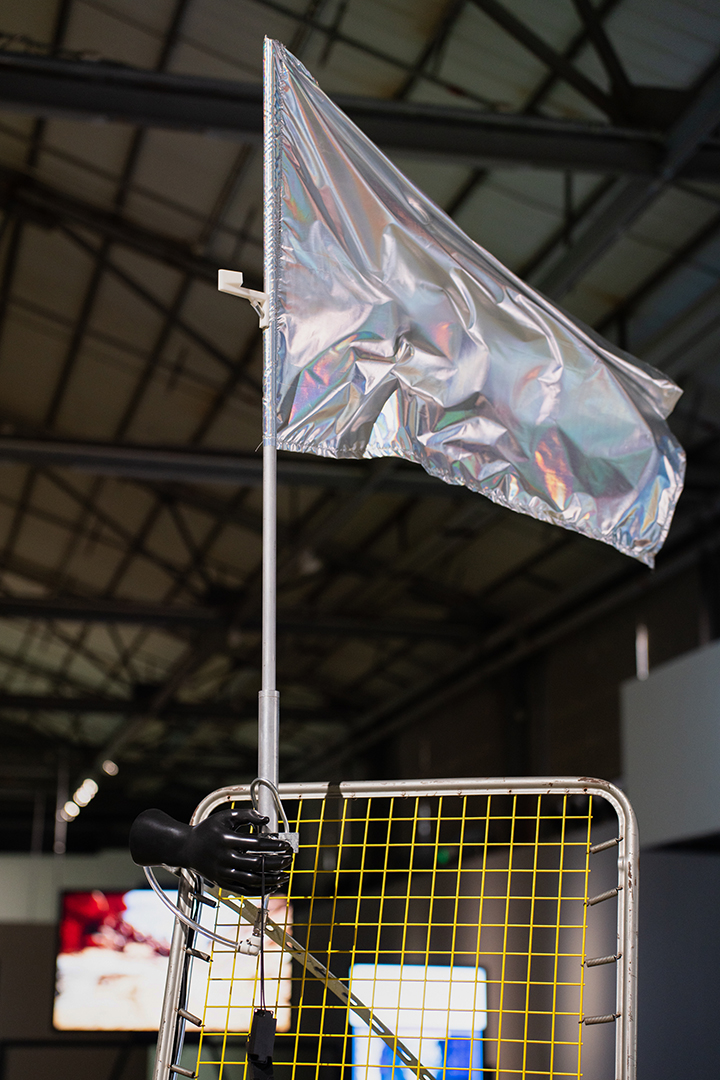
风的验证
旗帜、气泵、钢丝床、服务器机架、树莓派、步进电机、 屏幕、音箱、定制电路、定制软件
2021
《风的验证》是一个研究型创作项目,基于大规模监控语境下社交媒体网络中的虚拟田野,作品试图将社交网络用户所上传的视频里可见的不可见之物——风——复现于一个室内空间中。装置主体由旗子、网络服务器机架、竖置的钢丝床、控制系统等部分构成。其控制系统包含一个经深度学习(deep learning)训练的计算机视觉算法(computer vision algorithm),算法不断分析着收集于社交网络的有旗帜画面的短视频图像,其计算机视觉算法对视频中旗帜摆动的状态进行分析,并将分析数据发送给控制系统,以吹动旗帜使得其摆动状态与视频中相近,试图在物理世界中重建存在于数字影像中风的状态。《风的验证》旨在展现当下如抖音、快手等短视频社交平台的出现与普及如何引导了一种颠覆性的改变,使草根阶级得以参与信息话语权的争夺,也呈现出由下至上的数据分析与处理所带来的可能性。同时,装置中摆动的旗帜也是对当下的时代的隐喻:数字现实正在成为新的现实。
计算机视觉算法开发:邱伟豪
短视频搜集:亢丹茗、王美璇、荀紫(昆山杜克大学本科生)
《风的验证》是 CAC://DKU 研究创作学术奖金项目
Wind Verification
Flag, air compressor, wire bed, web server rack, Raspberry Pi, stepper motor, screen, speakers, custom circuit, custom program
2021
"Wind Verification" is a research-creation project based on the virtual anthropological field of social media networks in the context of mass surveillance. The installation attempts to reproduce the observable but invisible object - wind - in short videos uploaded by social network users in an indoor space. The installation consists of a flag, a web server rack, a wire bed, a screen, an air compressor and a custom control system. The selected short videos with flags are fed to the installation, and the computer vision algorithm running on the control system will analyze the waving state of the flag, and the control system blows the flag based on the analysis data to make its waving state similar to that in the video. It is trying to reconstruct the state of the wind in the physical world that exists in the digital image.
"Wind Verification" aims to show how the emergence and popularity of short video social platforms such as TikTok and Kwai has led to a subversive change in the sense that the grassroots can directly participate in the struggle for information discourse, and the possibilities of bottom-up data analysis and processing. It is also a metaphor for the current era: the digital reality is becoming the new reality.
Computer vision algorithm development: Weihao Qiu
Short video collection: Danming Kang, Meixuan Wang, Zi Xun(Undergraduate student, DKU)
Wind Verification is a CAC://DKU Research & Creation Fellowship project
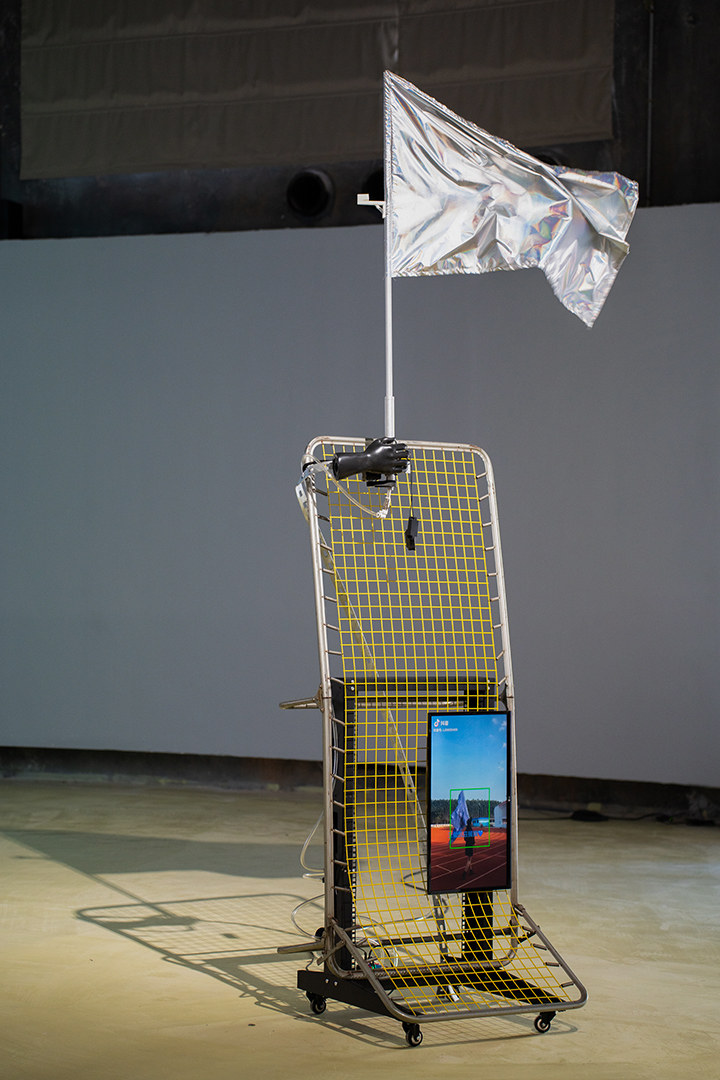
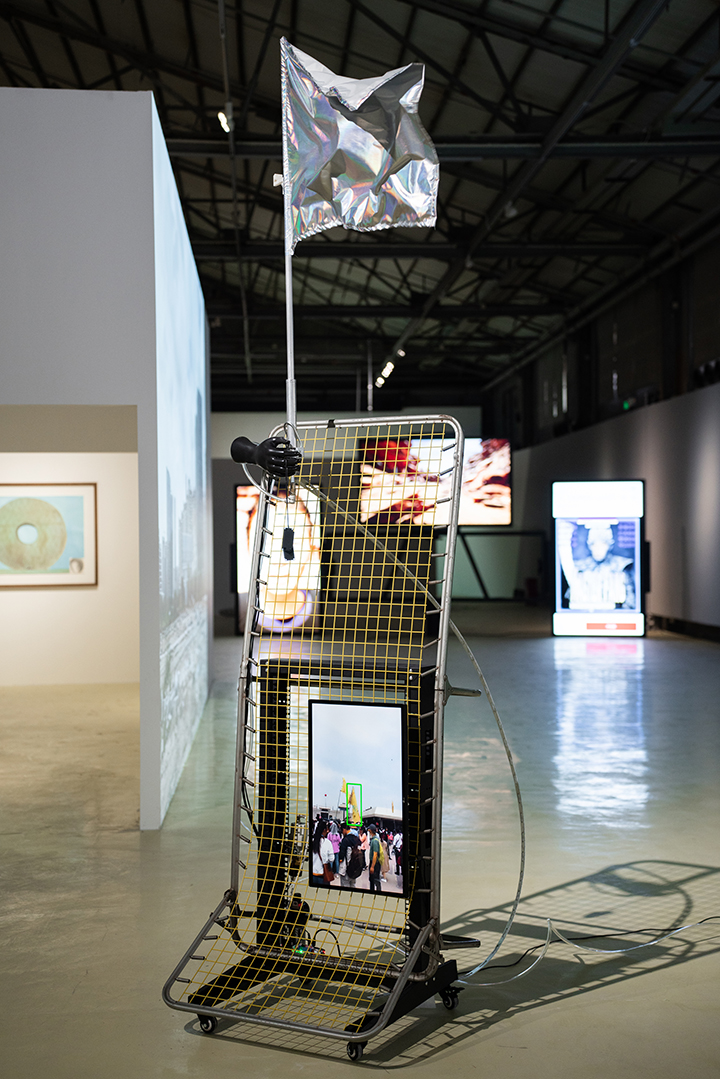
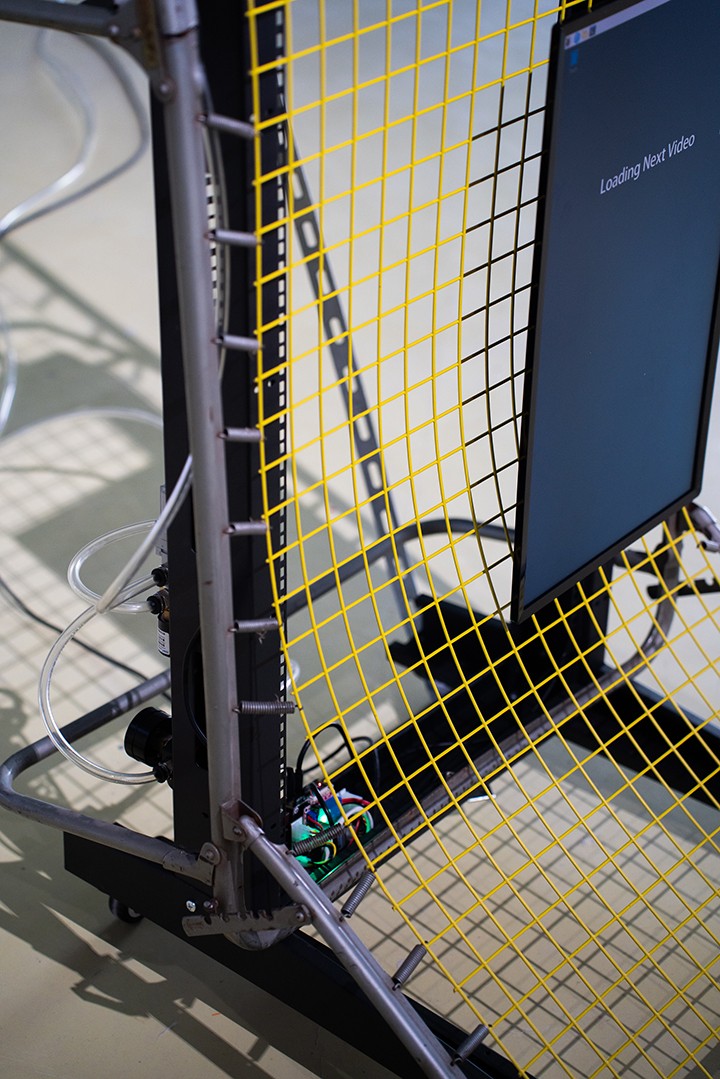
以上图片来自OCAT深圳馆
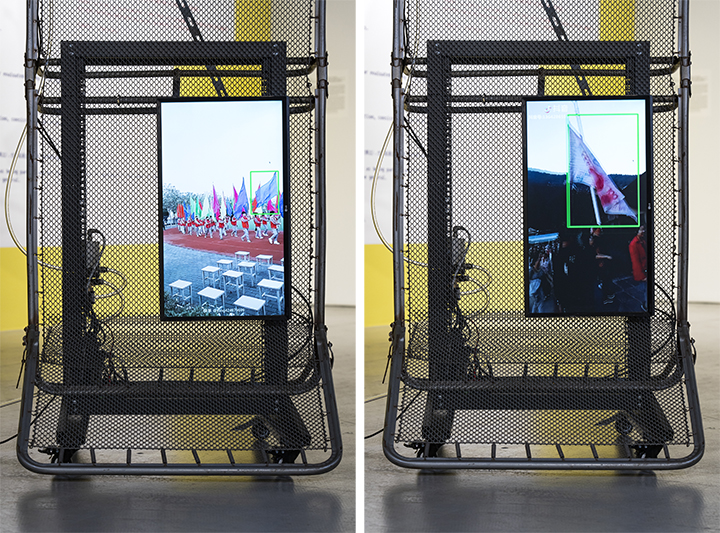
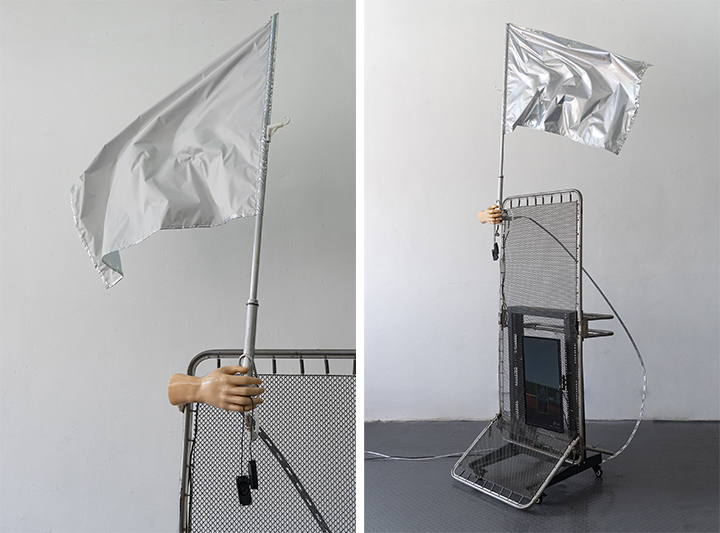
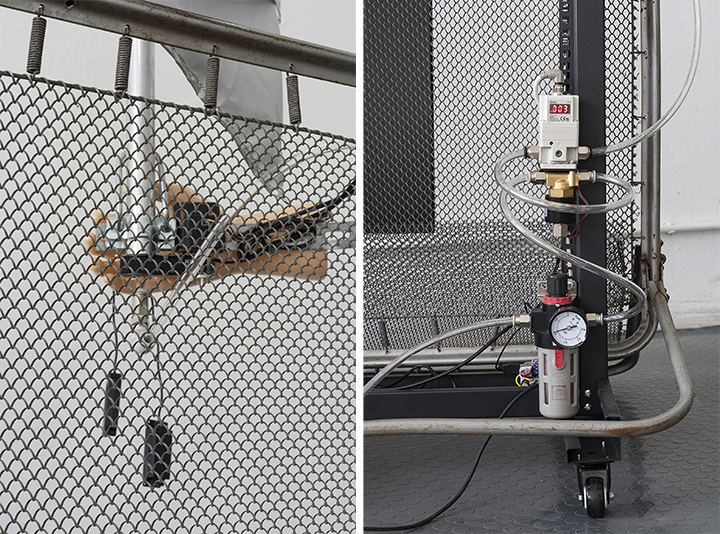
项目背景
当我们回看1987年中国发向世界的第一封电邮的内容:“越过长城,我们可以到达世界每个角落”("Across the Great Wall, we can reach every corner in the world")除了其前半句中意味深长的关于长城的隐喻之外,更值得观察的是后半句关于“我们”与“世界”这两者主体性的流动。社交媒体的盛行正在抹去世界的角落。大规模监控系统的信息获取方式从对数据与影像主动扑捉,扩展到对用户自发提交给平台的内容进行分析与用户之间的持续观看。如同韩炳哲所形容的数字全景监狱一样:“大数据”成为了“老大哥”,同时数字全景监狱中的居民并非相互隔绝,而是彼此联网。这种“超交流”造成了全方位的监控,同时也模糊了监控者与被监控者的界限。
与此同时,在中国抖音、快手等短视频社交平台盛行的背景下,"监控者"身份的流动体现在草根阶级可以自下而上直接参与到信息话语权的争夺中。这种参与是颠覆性的,其对社会的影响可见诸于2003年与2020年两次疫情期间信息传递的对比: SARS时期(2003)信息通过官媒自上而下的单向传递,使得对当时社会状况的描述高度统一。而在Covid-19期间(2020)中国社交网络上用户上传了大量的个人视角影像,这些信息对当时的社会状况做出了全方位的描述。并且其中不乏与主流媒体宣传相悖,并由于审查而瞬间消失的信息。就如Giuseppe Penone的作品"To turn one’s eyes inside out" 在当下产生的新的隐喻:社交媒体平台使得有着电子之眼(手机)的我们不再仅仅是信息的接收者,而是变成了可以即时显示世界的镜子。对于事件的唯一解释权就此消解。当每个人都可以将自己所拍摄的影像上传到网络平台,在每个人手中的手机为同一事件提供了多种视角时,也就为所有人提供了一种虚拟的在场的可能。
在Forensic Architecture的实践中就通过利用到网上的开源影像和行动主义者拍摄的资料,对进行现场复原与分析以还原真相。如在"Grenfell Tower fire"项目中,Forensic Architecture团队就曾利用千余个用户提交的与火灾相关的和开源的视频与照片,重现火灾现场的状况。由此可见在社交媒体上传播的影像,除了其叙述主体以外,在背景中其他信息可能同样蕴含着丰富的信息。
“风的验证”正是立足于大规模监控背景之下的社交媒体网络人类学田野,通过一种基于计算机视觉技术的类型学的方法筛选带有旗帜的特定影像片段。通过装置现场随着影像的切换而不断变化的风,以体感的方式呈现出来。在展现当下我们自下而上进行数据分析处理的所带来的可能性同时,也是当下时代的隐喻:虚拟的真实正在成为新的的真实。
Project background
Recall the content of China's first email in 1987: "Across the Great Wall, we can reach every corner in the world". Apart from the profound metaphor of the "Great Wall", currently, what is more interesting to observe is the changing concept of "we" and "the world". The popularity of social media is erasing the corners of the world. The data collecting methods of mass surveillance has expanded from the active capture of data and images to passively receive and analysis of the content that users submit to the online social media platform. As Byung-Chul Han described the digital Panopticon: "big data" becomes the "big brother," while the residents inside are not isolated, but are connected to each other. This "hyper-communication" creates a comprehensive surveillance, and at the same time blurs the boundaries between those who monitor and those who are monitored.
At the same time, in the context of the popularity of short-form video social platforms in China such as TikTok and Kwai, the blurry identity of "monitor" led grassroots direct participation in the struggle for power to discourse from the bottom up. The impact of this participation is subversive and can be seen in the contrast between the information flow during the 2003 and 2020 epidemics: during SARS (2003), information was transmitted top-down through the official media, resulting in a highly uniform portrayal of social conditions at the time. During Covid-19 (2020), users on Chinese social networks uploaded a large number of footage from personal perspectives, which provided a comprehensive image of the social situation at the time. And some of them contradict the mainstream media propaganda and disappear instantly due to censorship.
Giuseppe Penone's work "To turn one's eyes inside out" has created a new metaphor in the present: the social media platform has made us, with our electronic eyes (smart phones), no longer mere receivers of information, but mirrors that can instantly show the world. The right to interpret the truth of the incident from single perspective was thus eliminated. Everyone can upload their own photos and videos to the online platform, thus, there may be the various visual resources around the same event which provide multiple perspectives. It offers the possibility of a virtual presence for all. In the practice of Forensic Architecture, through the use of open-source images available on the Internet and data captured by activists, they conduct site recovery and analysis to restore the truth. For example, in the Grenfell Tower fire project, the Forensic Architecture team knitting together thousands of open-source photographs, videos and reams of metadata related to the fire, recreating the conditions of the fire scene. This shows that videos and images disseminated on social media can be rich in information in the background, in addition to the main subject of the narrative.
Based on the anthropological field of social media networks in the context of mass surveillance, "Wind Verification" uses a typological approach based on computer vision technology to analyze video clips with flags on social media. The installation generates the wind that changes with the switching of video clips, and presents it in a visual and sensorial way. While the project showing the possibilities of bottom-up data collection, analysis and processing, it is also presenting a metaphor for the current era: the digital reality is becoming new reality.